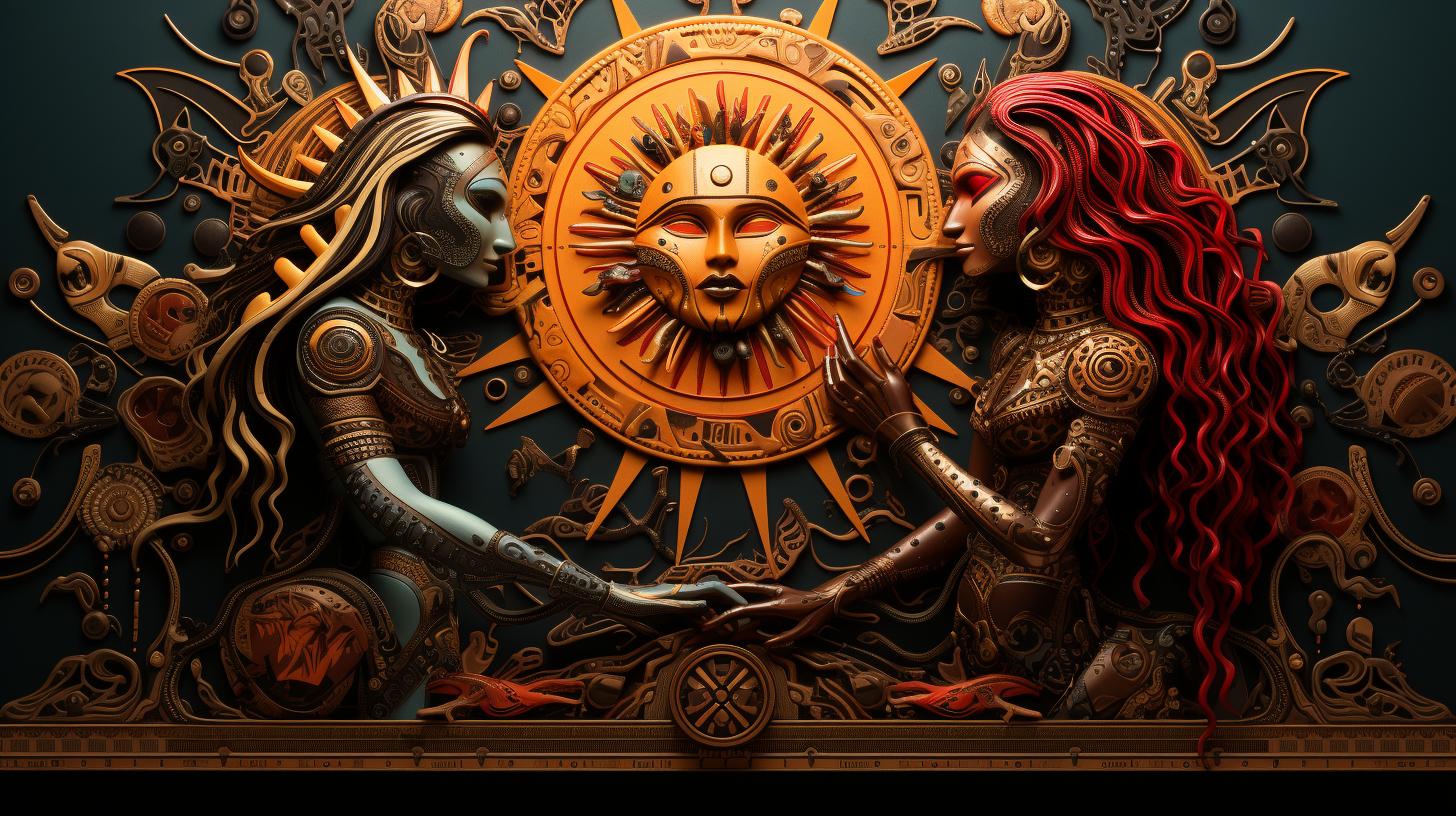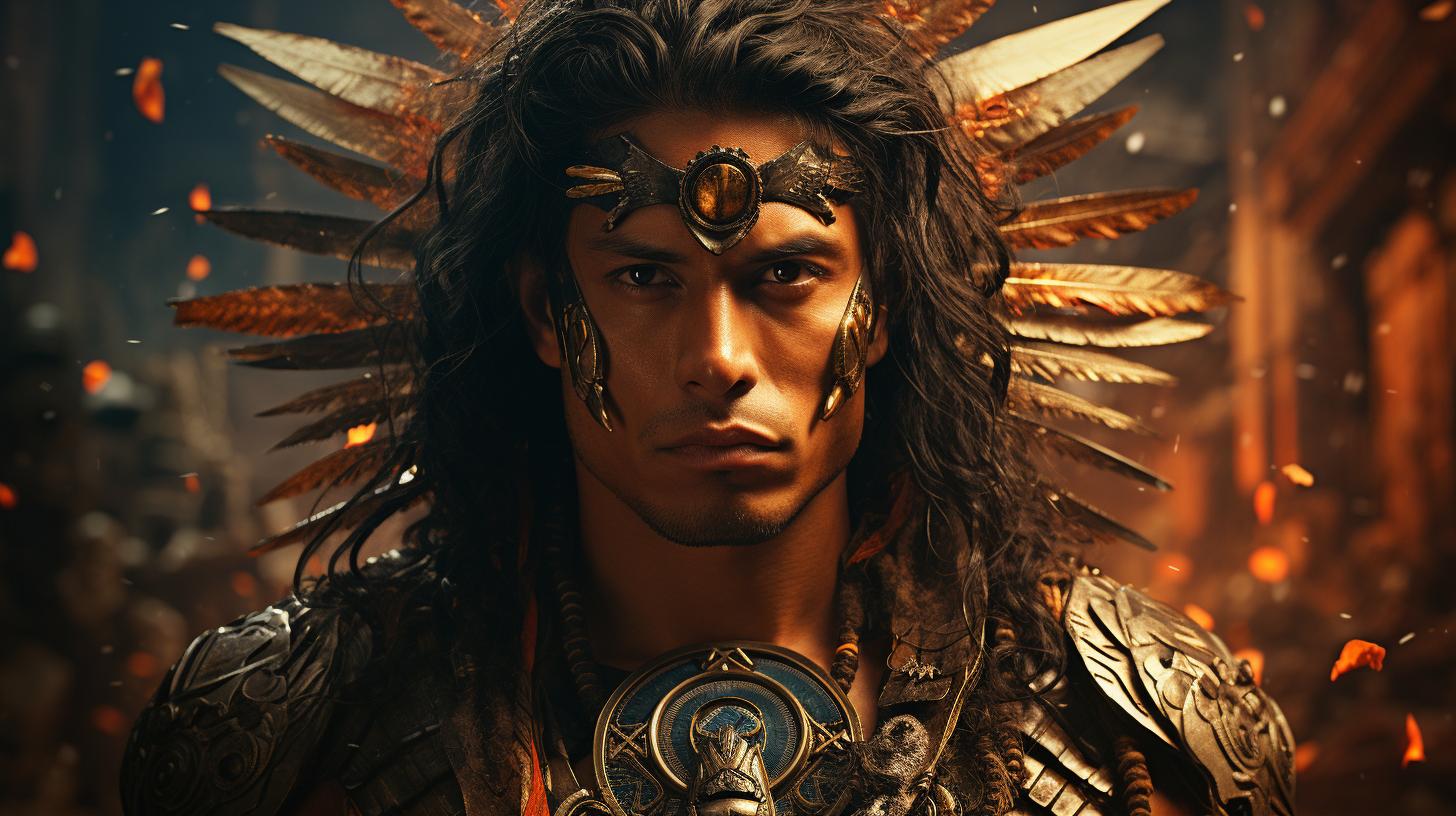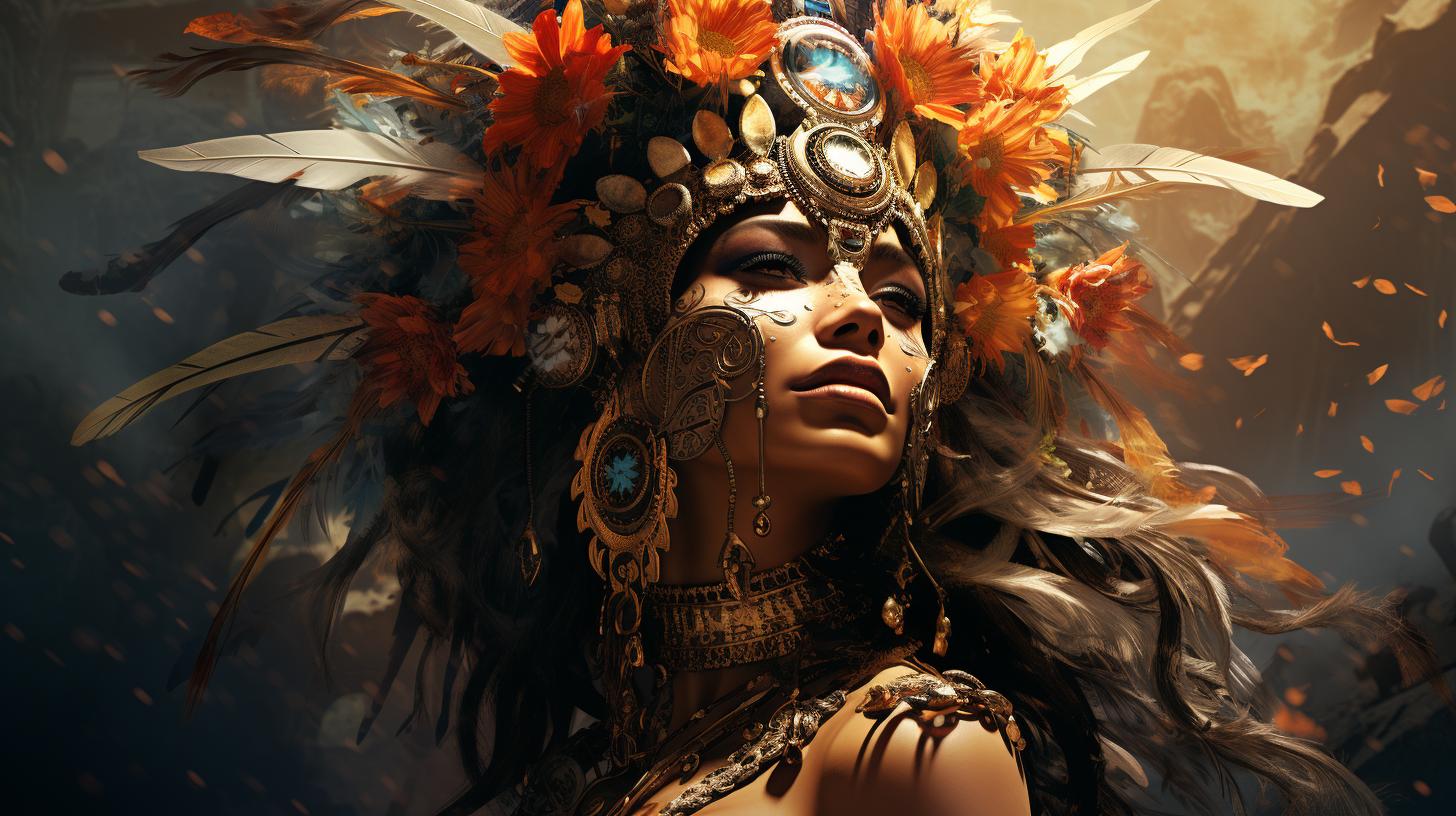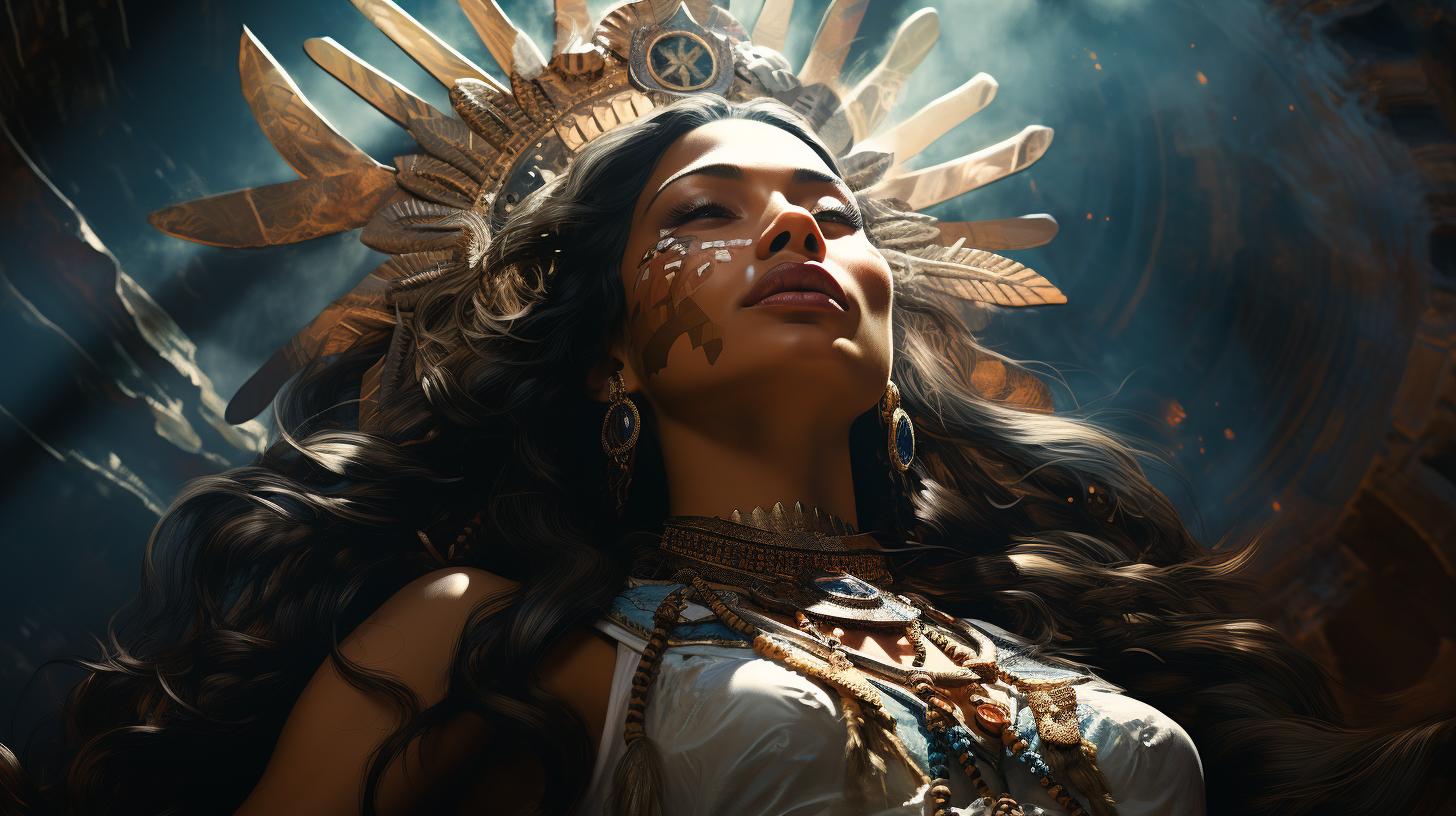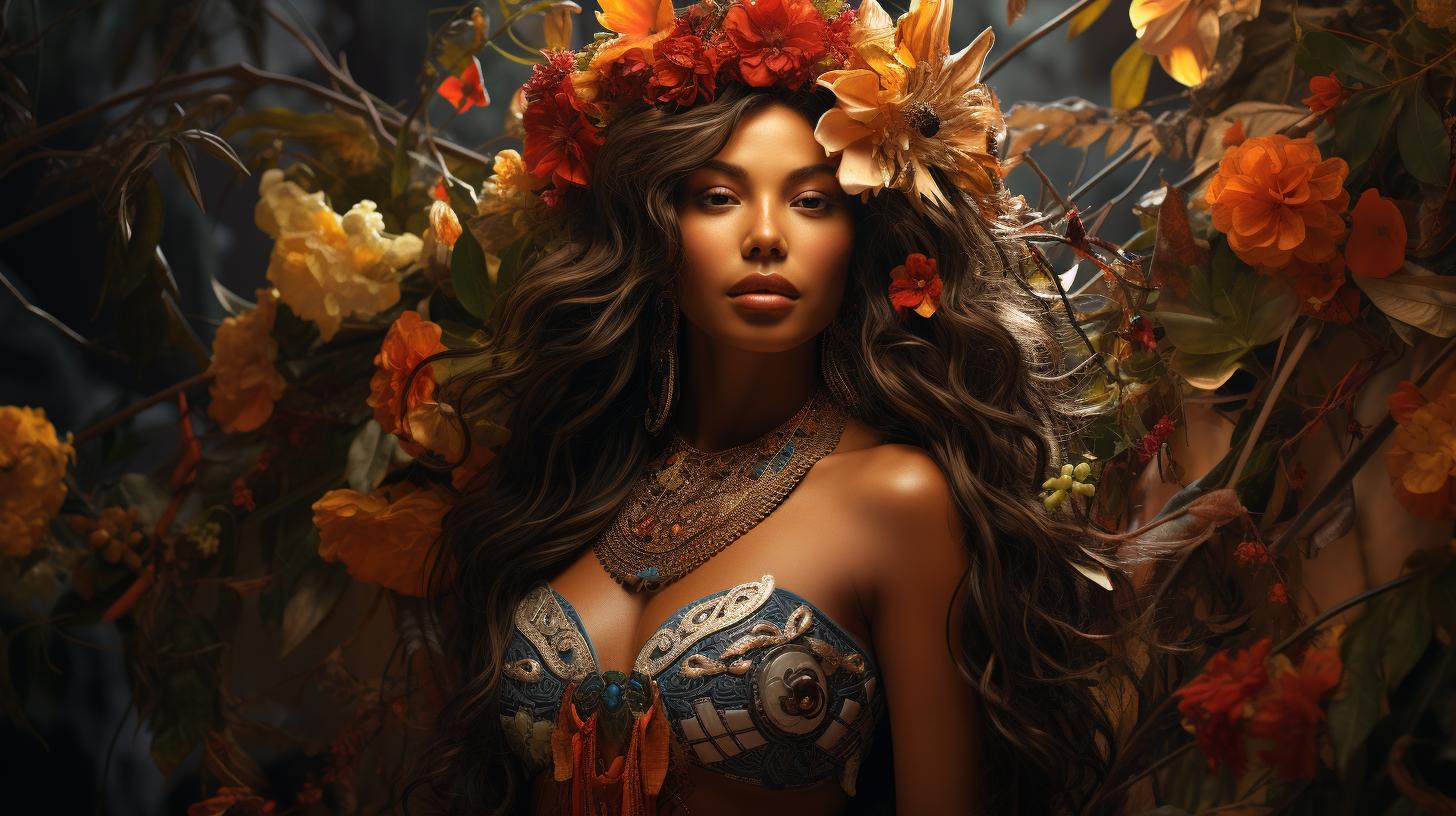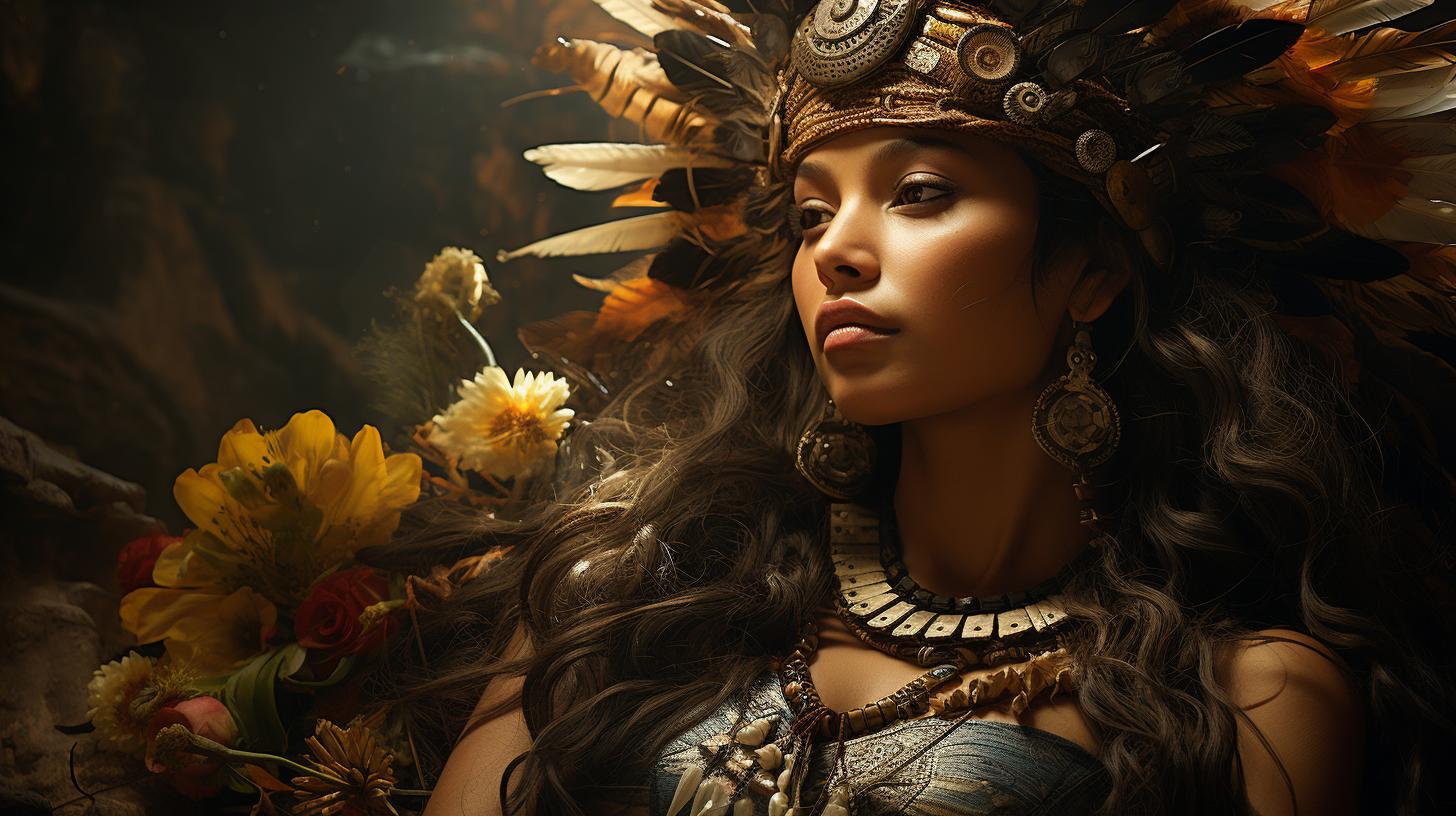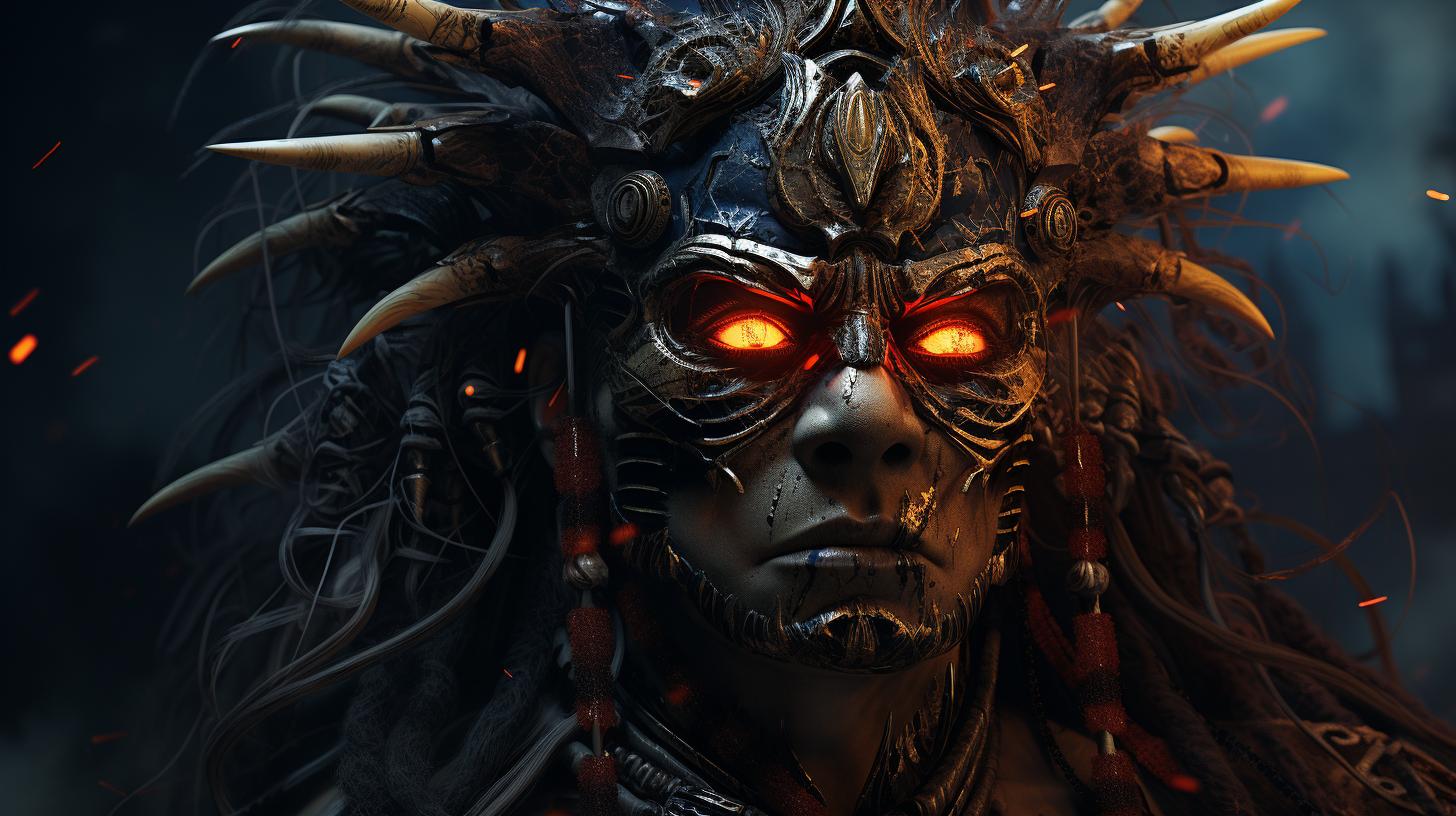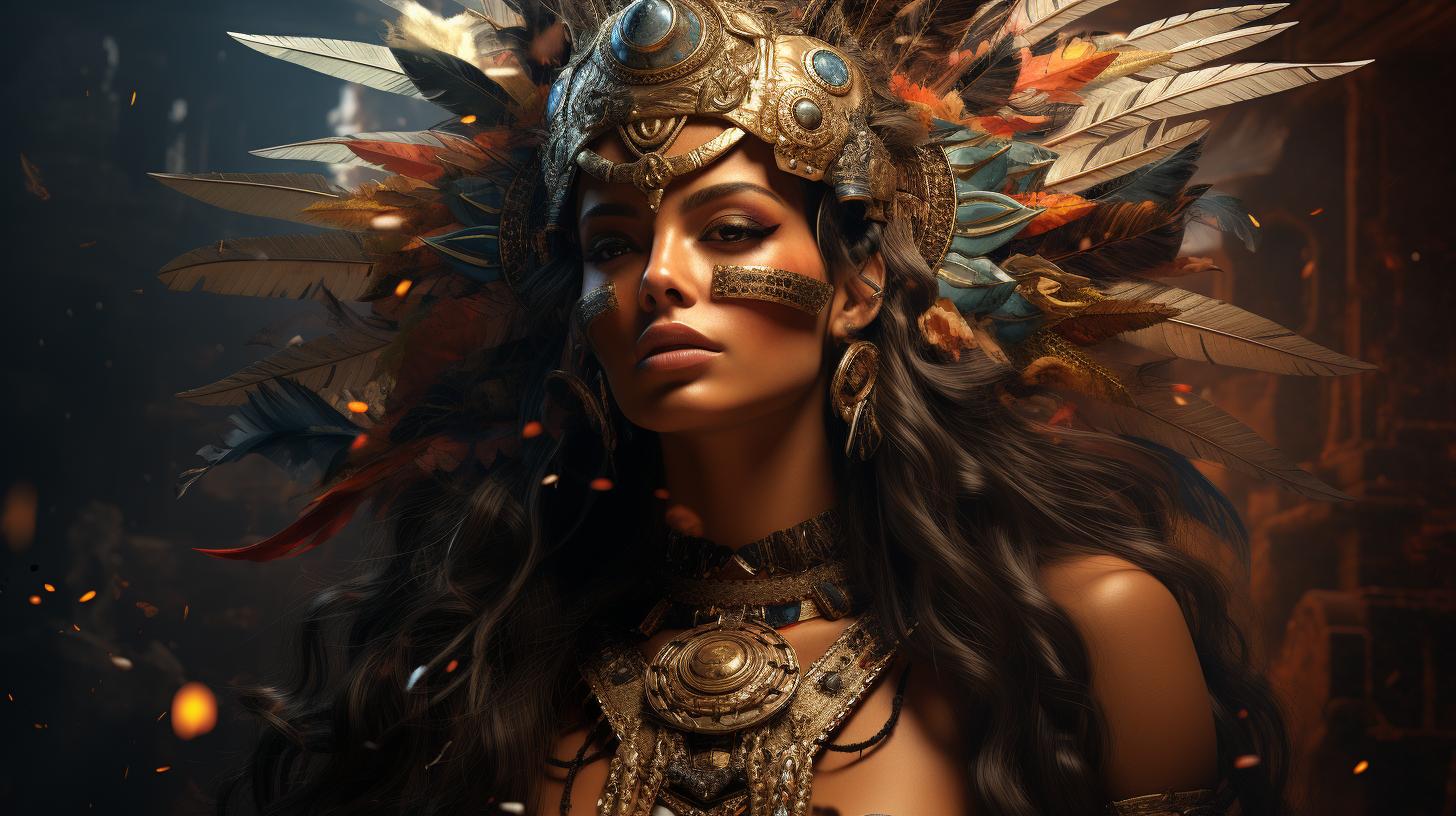Tzitzimime: The Terrifying Celestial Creatures Threatening Humanity
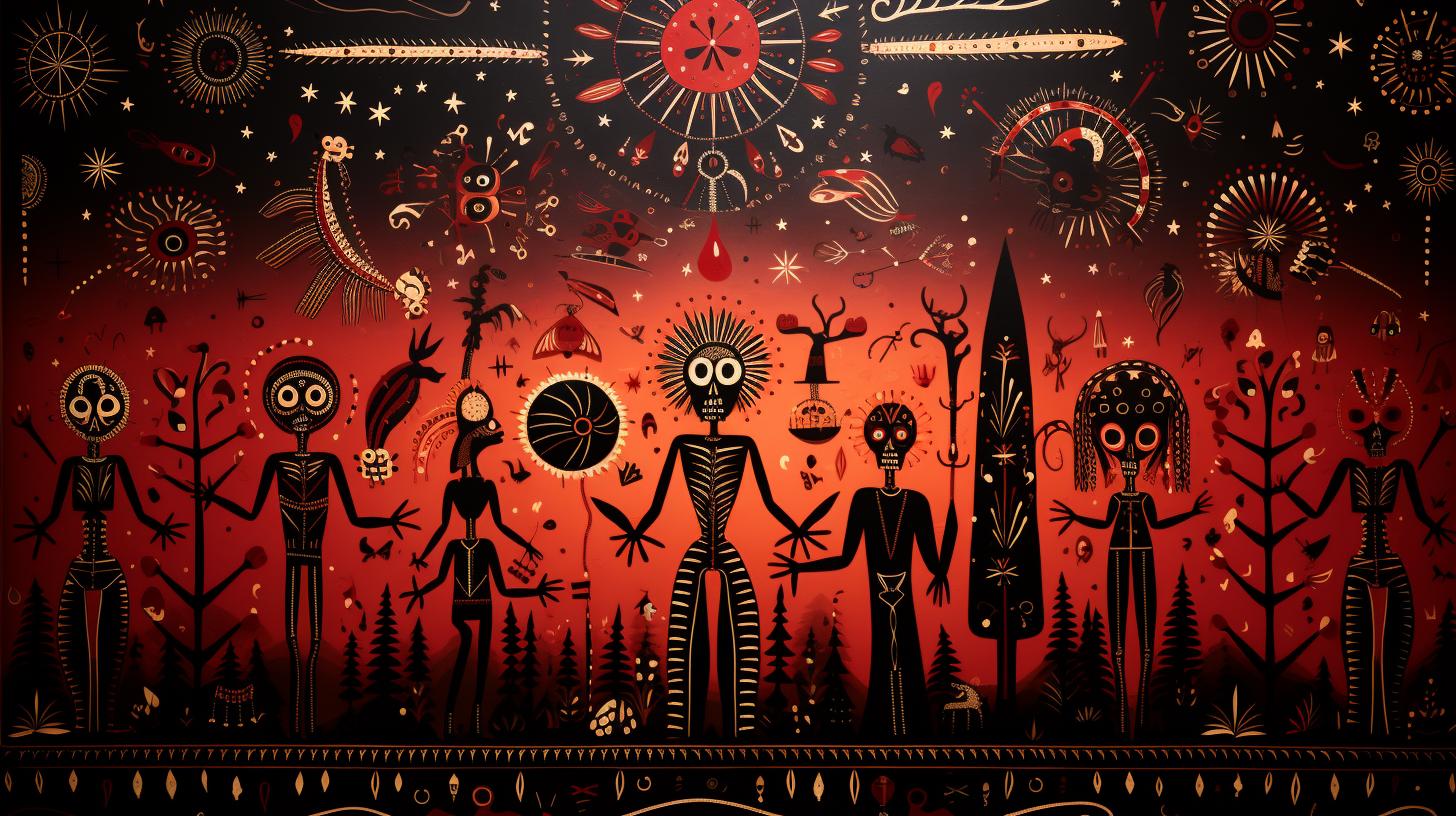
Tzitzimime, celestial creatures in Aztec mythology, are feared for their mission to destroy humanity. Legends describe their relentless pursuit of darkness, waiting for the gods and humans to weaken before unleashing chaos.
This article explores their origins, appearance, and role in Aztec cosmology, as well as the threats they pose during eclipses and in ceremonies like the New Fire. It also delves into notable Tzitzimime figures, such as the queen Itzpapalotl, and their impact on Aztec society and religious beliefs.
Discover the terrifying world of the Tzitzimime and their enduring legacy.
The Origin and Legends Surrounding Tzitzimime
The Aztec mythological beliefs revolve around the existence of powerful celestial beings known as Tzitzimime. These supernatural entities were believed to dwell in the darkness and were considered a threat to humanity.
According to Aztec mythology, the Tzitzimime patiently awaited the moment when both humans and gods would fail to sustain the world, unleashing chaos and destruction. To ensure the continued existence of the Tzitzimime every 52 years, the Aztecs performed a special ceremony known as Xiuhmolpilli or ‘The Binding of the Years’.
The Aztec Mythology and Tzitzimime
In Aztec mythology, the Tzitzimime were depicted as terrifying celestial demons with the sole purpose of destroying humanity. They were associated with chaos, darkness, and the end of the world. These fearsome creatures were believed to have the ability to change their appearance and could manifest as both male and female entities.
Their physical characteristics were described in great detail, including their ashen grey and stretched skin, bright blue eyes, black hair adorned with paper ribbons, jaguar and eagle claws, and attire consisting of shell skirts and bone capes.
It was also believed that the Tzitzimime adorned themselves with jewelry made from body parts of their victims.
Tzitzimime in Popular Culture: Victor and Valentino
The influence of Tzitzimime extends beyond Aztec mythology and into popular culture, as seen in the animated series ‘Victor and Valentino’. The show features Tzitzimime creatures portrayed as supernatural beings with malevolent intentions.
These episodes showcase the Tzitzimime’s connection to Aztec legends and their portrayal as formidable adversaries to the main characters.
- The Tzitzimime in Aztec mythology were believed to be celestial demons.
- They were associated with chaos, darkness, and the end of the world.
- They could manifest as both male and female entities.
- Their physical characteristics included ashen grey and stretched skin, bright blue eyes, black hair with paper ribbons, jaguar and eagle claws, and attire consisting of shell skirts and bone capes.
- The Tzitzimime adorned themselves with jewelry made from the body parts of their victims.
Characteristics and Appearance of Tzitzimime
Tzitzimime, the celestial creatures of Aztec mythology, possess distinctive characteristics and a striking appearance that sets them apart from other beings.
These terrifying entities embody a dark and destructive force that threatens the balance of the world.
• Lurking in the depths of the cosmos, Tzitzimime have a formidable presence. They are often depicted as celestial demons with an unsettling aura that inspires fear and awe.
• Their physical appearance is described as otherworldly, featuring ash-gray and stretched skin that accentuates their supernatural nature.
• Tzitzimime possess mesmerizing blue eyes that shine like stars, giving them an ethereal and haunting gaze.
• Their jet-black hair is adorned with paper ribbons, adding a touch of macabre elegance to their overall look.
• These celestial beings wield tremendous power, manifested in their fearsome claws that take on the deadly attributes of both jaguars and eagles.
• Evidencing their connection to the cycle of life and death, Tzitzimime don faldas de conchas (shell skirts) and capes made from bones. These macabre adornments symbolize their dominion over mortals and the underworld.
• As a chilling reminder of their destructive nature, Tzitzimime accessorize themselves with the body parts of their victims, transforming these grim remnants into haunting jewelry.
The detailed depiction of their appearance illustrates the prominent role Tzitzimime play in the Aztec cosmology’s rich tapestry, signifying their malevolent and awe-inspiring presence within the celestial realm.
Role of Tzitzimime in Aztec Cosmology
The Tzitzimime played a significant role in Aztec cosmology, being considered as heralds of the darkness. They were believed to have the power to bring about both positive and negative outcomes.
In Aztec mythology, various gods and goddesses could take on the appearance of Tzitzimime, further emphasizing their importance in the cosmological framework.
One prominent Tzitzimime figure is Itzpapalotl, known as the Queen of Tzitzimime.
She held dominion over the celestial realm and was particularly associated with the souls of deceased children. Itzpapalotl served as an intermediary between the mortal and divine worlds, guiding the departed souls and ensuring their safe passage to the afterlife.
Another group linked to the Tzitzimime are the Cihuateteo, female spirits associated with childbirth and fertility. Considered to be ancestors who died during childbirth, they were revered and venerated for their protective powers.
The Cihuateteo had close connections to the Tzitzimime and were often depicted alongside them in Aztec iconography.
The Tzitzimime’s presence in religious beliefs and ceremonies was profound. Their association with celestial phenomena like eclipses and the changing of the year underscored their significance.
During the New Fire Ceremony, the Tzitzimime were particularly feared. The ceremony aimed to ensure the continuity of existence and prevent the onslaught of darkness. Failure to successfully perform the ritual would risk inviting the wrath of the Tzitzimime upon the Aztec society.
Within daily life, the Tzitzimime cast a looming shadow of fear and caution. Their association with the moon made nights of lunar eclipses especially terrifying, as it was believed the Tzitzimime descended to Earth during these celestial events.
The Aztecs, therefore, took extra precautions during such occasions, staying indoors and avoiding any unnecessary activities.
In summary, the Tzitzimime held a prominent role in Aztec cosmology. They were considered heralds of darkness and played a pivotal part in religious beliefs and ceremonies.
Figures like Itzpapalotl and the Cihuateteo further showcased their importance. The fear and caution associated with the Tzitzimime during celestial events were ingrained in the daily lives of the Aztecs, shaping their actions and beliefs.
Tzitzimime: Threats and Perils
The Tzitzimime pose significant dangers and perils in Aztec mythology, playing a role during eclipses, nights, the New Fire Ceremony, and their connection to the moon and the underworld.
Tzitzimime during Eclipses and Nights
During eclipses, the Tzitzimime were believed to descend upon the Earth, unleashing their terrifying powers.
These celestial creatures brought chaos, destruction, and fear, particularly during the dark nights when their presence was more potent. Aztecs had to remain vigilant and take precautions during these times to avoid their wrath.
Tzitzimime in the New Fire Ceremony
The New Fire Ceremony was a crucial ritual for the Aztecs to ensure the continued existence of the Tzitzimime every 52 years. However, this ceremony also posed a threat as it attracted the attention of these celestial beings.
Failing to ignite the new fire meant inviting darkness and the imminent arrival of the Tzitzimime to ravage mortal beings.
The Connection between Tzitzimime and the Moon
The Tzitzimime are closely linked to the moon in Aztec cosmology. It was believed that when the moon was eclipsed or when specific lunar occurrences happened, these celestial demons gained strength and influence.
The Aztecs associated these celestial phenomena with the looming presence and power of the Tzitzimime, causing trepidation and caution.
Tzitzimime and the Underworld
The Tzitzimime were also connected to the underworld, adding to their ominous nature. Itzpapalotl, the queen of the Tzitzimime, ruled over the sky for souls of deceased children. The fear of encountering the Tzitzimime in the dark depths of the underworld intensified the belief in their terrifying existence and served as a constant reminder of their presence.
Famous Tzitzimime Figures and Goddesses
This section explores the prominent figures and goddesses associated with Tzitzimime in Aztec mythology. These beings hold great significance in the celestial realm and play crucial roles in the Aztec cosmology.
Itzpapalotl: The Queen of Tzitzimime
Itzpapalotl, known as the Queen of Tzitzimime, is a fearsome goddess associated with destruction and rebirth. She rules over the celestial spirits and is often depicted as a skeletal figure adorned with blades and obsidian mirrors.
Itzpapalotl represents the transformative power of the Tzitzimime, showcasing their ability to bring about both chaos and renewal.
Cihuateteo: Female Spirits Associated with Tzitzimime
Among the Tzitzimime hierarchy are the Cihuateteo, female spirits believed to be the ghosts of women who died during childbirth. These spirits, often depicted as skeletal figures with jaguar claws, were both feared and revered by the Aztecs.
Closely associated with Tzitzimime, the Cihuateteo participated in battles alongside their celestial counterparts during times of cosmic upheaval.
Together, Itzpapalotl and the Cihuateteo embody the power and presence of Tzitzimime within Aztec mythology.
Their roles and attributes contribute to the complex cosmological beliefs of the Aztecs, highlighting the interplay between light and darkness, destruction and creation, in their worldview.
Tzitzimime and Their Impact on Aztec Society
Tzitzimime had a profound impact on Aztec society, influencing their religious beliefs, ceremonies, and daily life.
The reverence and fear of these celestial creatures shaped the way the Aztecs approached spirituality and navigated their existence.
Tzitzimime in Religious Beliefs and Ceremonies
The presence of Tzitzimime in Aztec mythology played a crucial role in shaping religious beliefs and practices. The Aztecs believed that appeasing the Tzitzimime was necessary to maintain balance in the spiritual realm and ensure the continuity of life on Earth.
- The Aztec Mythology and Tzitzimime’s Role as Herald of Darkness
- The Xiuhmolpilli Ceremony: An Offering to Tzitzimime
- Importance of Tzitzimime in Aztec Rituals and Sacrifices
- The New Fire Ceremony: Symbolic Renewal and Protection
The Effect of Tzitzimime on Daily Life
Tzitzimime’s existence permeated all aspects of Aztec society and had a significant impact on the daily lives of its people.
Fear of the Tzitzimime influenced various activities, decisions, and precautions taken by the Aztecs throughout their daily routines.
- Tzitzimime-related Practices During Eclipses and Nights
- Precautions Taken During Tzitzimime Threats: Children and Pregnant Women
- Tzitzimime’s Influence on Agricultural Activities and Harvest Seasons
- Psychological and Cultural Impact of Tzitzimime on Aztec Society
The enduring presence of Tzitzimime in Aztec society demonstrates their deep-rooted significance and the lasting impact they had on the daily lives, religious beliefs, and cultural practices of the Aztec civilization.
.











